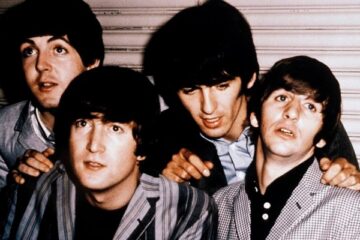1967 was a pivotal year for The Beatles as their spiritual journey to India saw them adopting the principles of Transcendental Meditation in more ways than they likely anticipated. Creatively, George Harrison led the charge, incorporating what they had learned from Ravi Shankar into the 1960s pop mainstream. However, Harrison also embraced spiritual ideation, transforming from a quieter, more introverted figure into a more contemplative and enigmatic one.
“Unless you’re God-conscious,” Harrison explained on the BBC’s Fact or Fantasy in 1970. “Then you have to change because it’s a waste of time. The change that happens through meditation is a gradual thing, but the more you realise with anything with growing just older, the more you realise it helps you in some way. With meditation, you’re able to understand that there is unity lying beneath everything.”
He added: “The purpose [of meditation] is to transcend from this relative state of consciousness to an absolute state of consciousness.”
Harrison’s fixation with the teachings was a long time in the making, predating their trip to India with various scriptures, texts, and televised debates on the subject—Harrison had previously become turned on to the teachings of Lao Tzu’s Tao Te Ching by Juan Mascaró, who had given him a copy of his anthology book Lamps of Fire. Te Ching was included in the book, and Mascaró had brought Harrison’s attention to it after their appearances on The Frost Programme alongside John Lennon.
During this time, Lennon’s interest in such teachings was merely curiosity. While he didn’t enable them to transform his entire outlook in the way Harrison had, he attended lectures and embraced Transcendental Meditation for a time. However, his quest for spirituality ended up being guided by broader questions about life and existence and how to unveil inner peace through spirituality rather than with spirituality and religion.
Harrison channelled his fascination with these teachings into The Beatles’ song ‘The Inner Light’, the 1968 B-side to ‘Lady Madonna’, by referencing chapter 47 of Te Ching from Mascaró’s prompt. Echoing its themes of detachment, discovering inner peace, and stumbling across enlightenment through Transcendental Meditation, ‘The Inner Light’ emphasises Harrison’s newfound belief that wisdom cannot be found through any external forces.
The underlying theme of ‘The Inner Light’ reflected Harrison’s belief that finding peace is an extremely personal journey, compounded by the strength and focus of the mind without any influence or disturbance from the outside world. “Without looking out of my window, I could know the ways of heaven,” he sings, highlighting the power of inner reflection in the following line, “The farther one travels, the less one knows.”
Lennon might not have been impacted by these teachings as profoundly as Harrison, but his involvement guided some aspects of his artistry, namely how his broader worldview dictated many of the things he felt compelled to write about. As a solo artist, these spiritual musings came to the fore, though not in the precise manner executed by Harrison—instead, Lennon allowed his infinite quest for peace and wisdom to manifest in the form of a more generic idealisation of how beautiful the world could be if everybody came together in unity.
Though more concerned with the longing for a more peaceful and harmonious world, Lennon’s ‘Imagine’ reflected many of the same principles Harrison explored in ‘The Inner Light’, showcasing a world without external disturbances—like borders, divisions, disagreements, prejudices, and political factions—to imagine a better, more unified world rooted in simplicity and spiritual transcendence. “Imagine there’s no heaven; it’s easy if you try,” Lennon offers, “No hell below us, above us only sky.”
Though over ten years apart and stark in their subtle differences, it’s difficult to ignore that ‘The Inner Light’ and ‘Imagine’ emerged from the same seed. Like Harrison, Lennon became obsessed with the idea of a peaceful mind, which can only be achievable when you prioritise the value of meditation and calmness and shun the material world, where overwhelm often disrupts the inner flow.
‘The Inner Light’ is more forthcoming in its belief, as evidenced by its use of traditional Indian instruments and direct channelling of Eastern philosophy. However, although ‘Imagine’ appears simple, more accessible, and directly soothing, these qualities mirror Harrison’s earlier idealisation. Both appear reflective and observant—qualities instilled in them from their exposure to transcendental meditation—offering criticisms about those who look outward for peace and unity while exposing the pitfalls of the outside world in its inability ever to offer anything close to solemnity.



